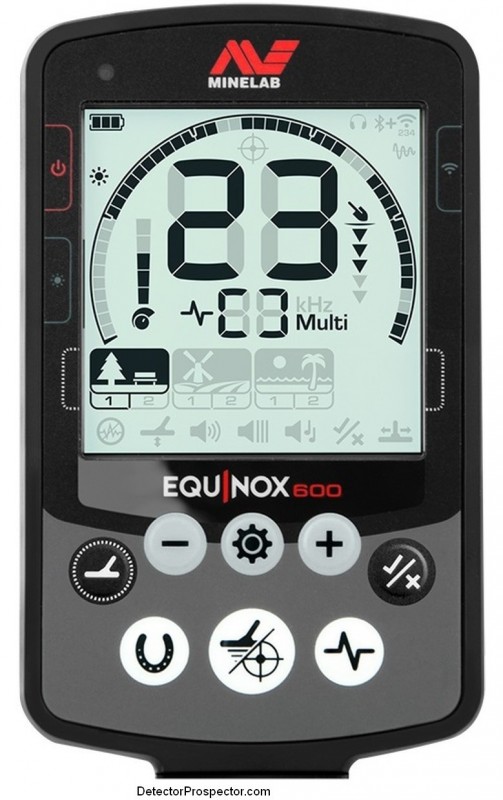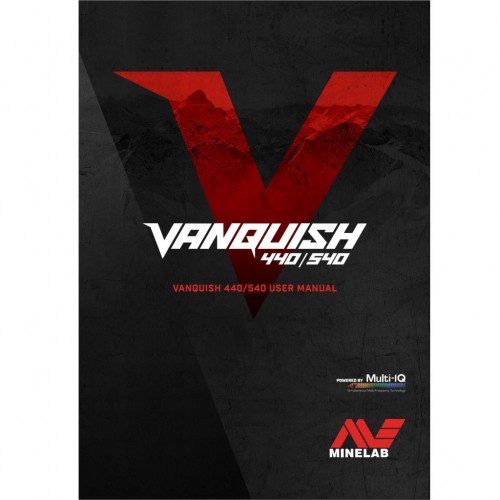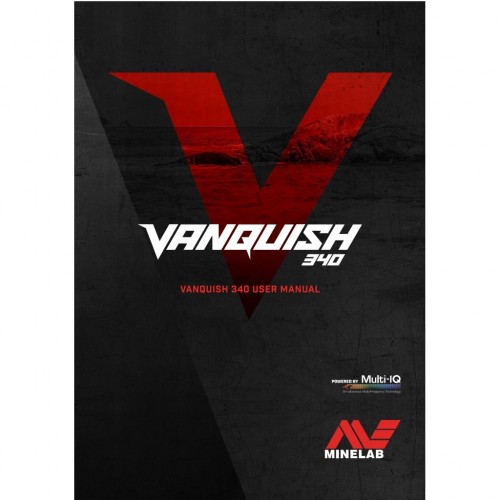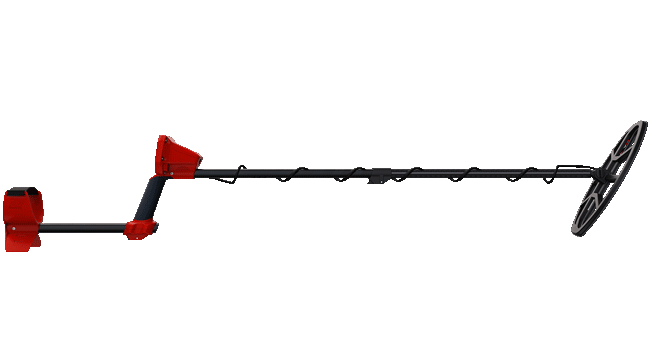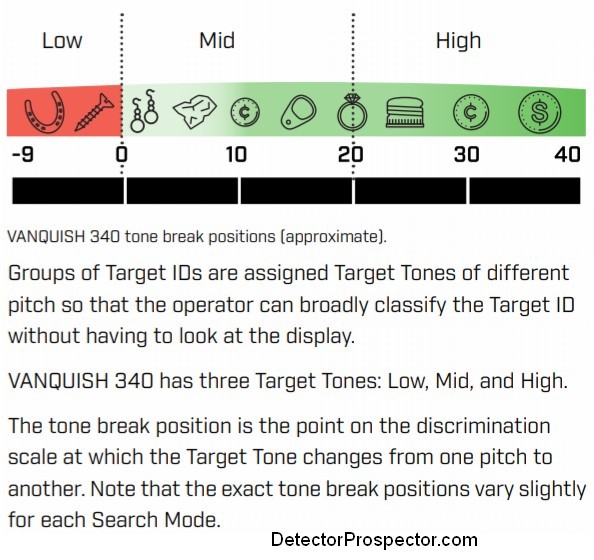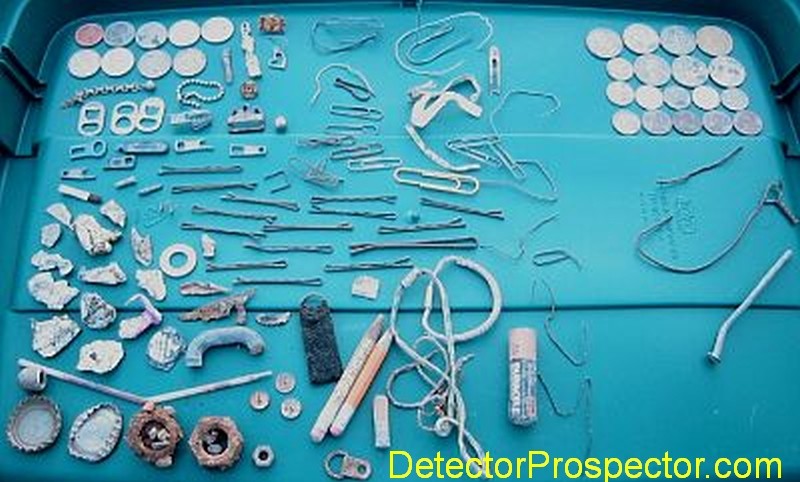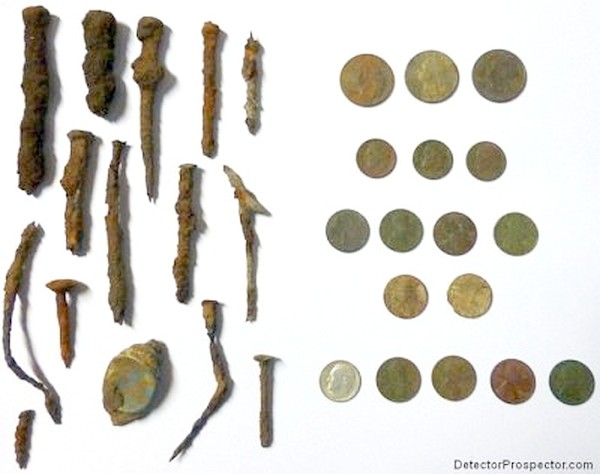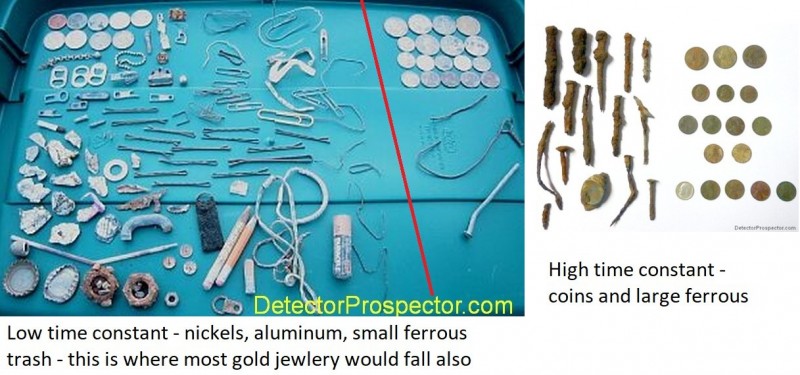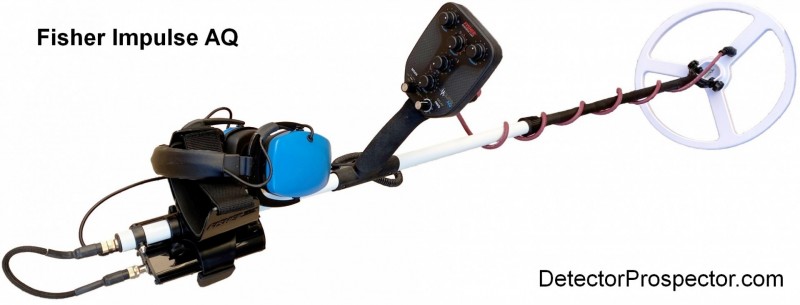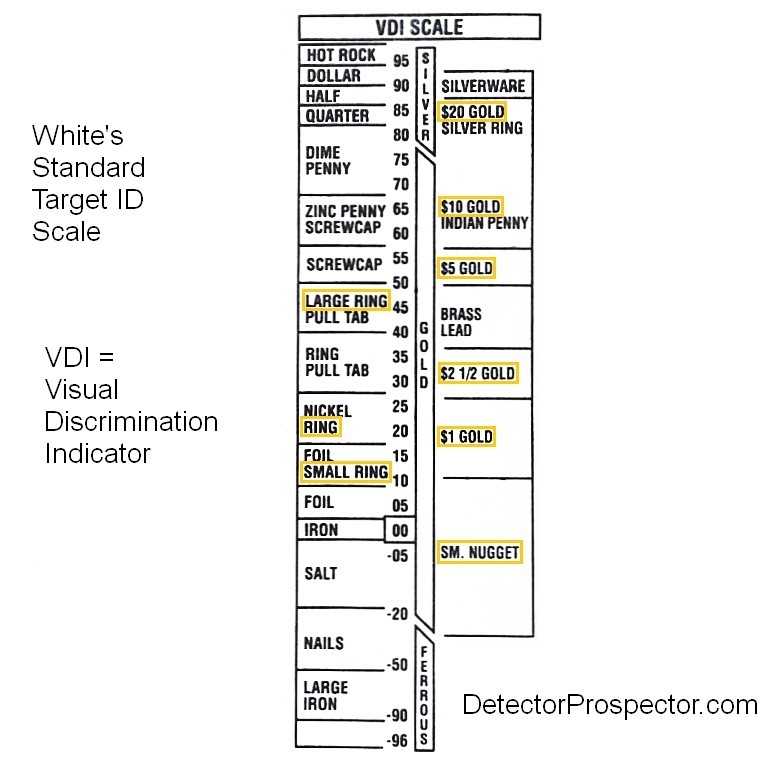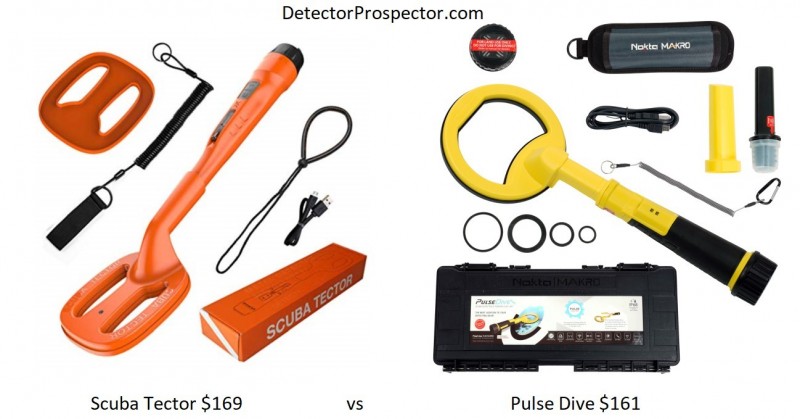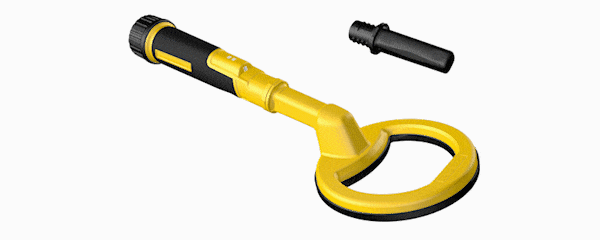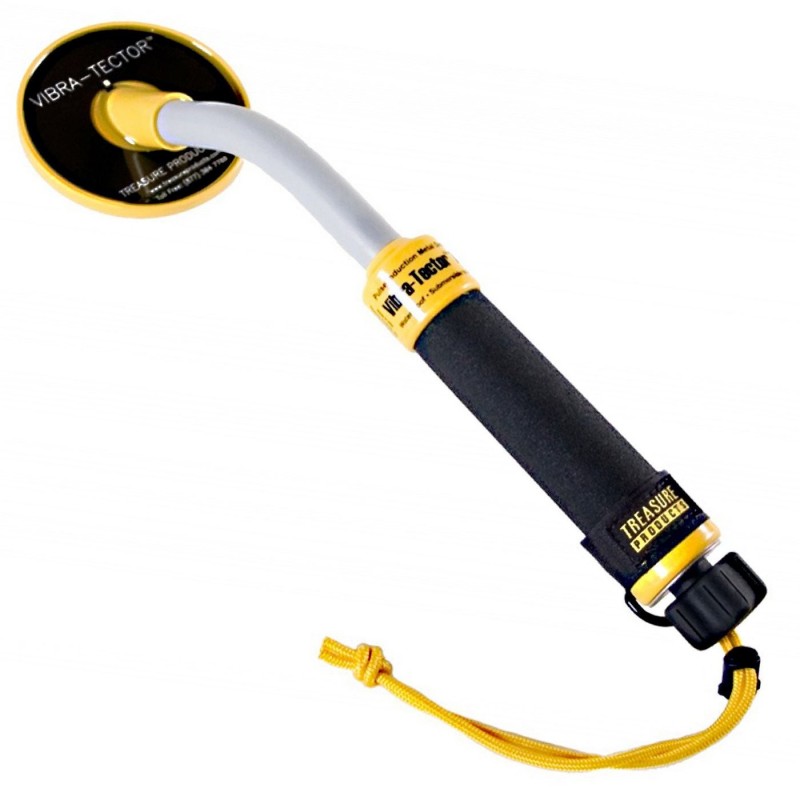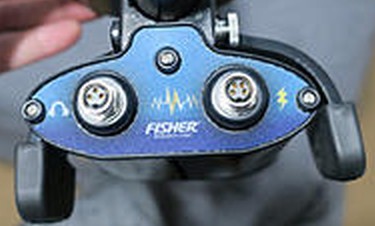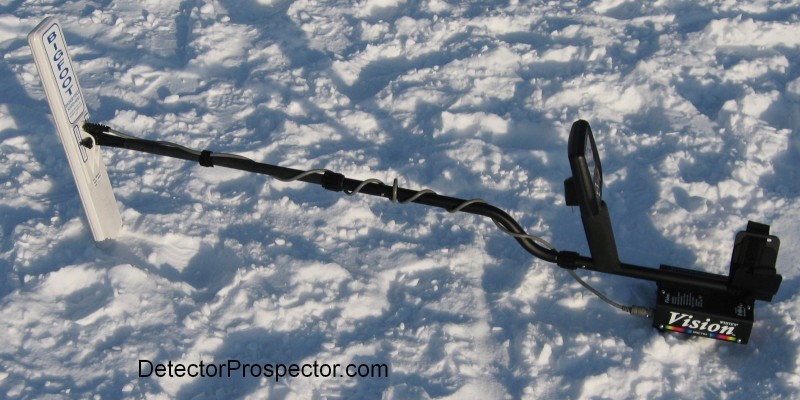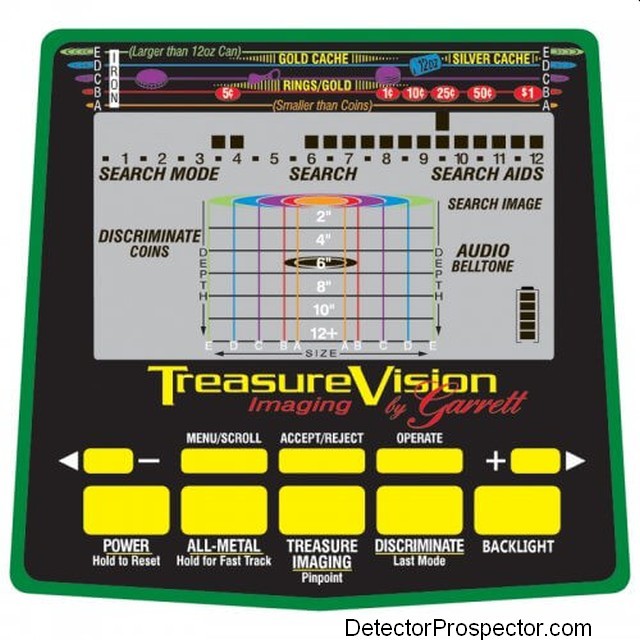-
Posts
19,790 -
Joined
Content Type
Forums
Detector Prospector Home
Detector Database
Downloads
Everything posted by Steve Herschbach
-
You have an Equinox 600. There are no stickers on the shaft unless somebody at Kellyco placed one there. Bottom line is the wrong sticker on the shaft does not change what the detector is. The detector says which model it is right on the front under the display, and as Jeff pointed out the 600 does not have a User Profile button under the WiFi button. Minelab Equinox 6000 display and controls
-
Good question. Platinum rings can read real low, and smaller ones down in the foil range. I would not be shocked if some platinum gets lost with the AQ discrimination setting. The talk focuses on gold for a reason. Like I have mentioned in another post getting our hands on this machine and doing a lot of target testing will be critical to determine where the lines are drawn and if they can be moved at all. Let's face it, marketing will talk about what the machine does well and will let other stuff go unmentioned. We will have to figure out the details ourselves. In a nutshell, where are the mid-range cutoffs both high and low? And what trash is still going to show up in the mid-range? I have an idea what to expect but only actual use will prove the reality of it all. There are bound to be people who just freak out over the idea of missing anything. The fact is unless you are using a high power PI and dig every target we all miss stuff. The more discrimination you employ, the more inevitable it becomes. For me it is purely a practical matter involving how much time I have and in some cases how many targets I can physically dig. Moving the odds in my favor by eliminating worthless digs at the cost of some possible good targets missed is one of the most important strategies we employ in metal detecting, and getting it wrong too far in either direction can be costly. I have often used VLF discrimination to eliminate zinc penny and higher targets while park detecting for rings. People will say "yeah, but some rings read like zinc pennies". Yup, that's true. But rather than fill my pockets with coins I prefer to concentrate on the mid to low range where the odds are better for rings and save a lot of time digging coins I am not looking for. On the very low end I may also pass on the real small foil and can slaw bits. This is what the AQ is also doing. It sounds like lots of time has been spent optimizing where to put the cutoff points and I am going to trust the testers have chosen wisely. Nothing is perfect. I am all in for a PI that concentrates on the main sweet range while eliminating a lot of deep trash digging, the bane of any PI detector. And if the trash level is low anyway, just switch to all metal and dig it all. Best of all it's not an insane 7 lbs like my old ATX! I expect the AQ discrimination system will have limits but none that will surprise me and I am willing to accept the limits to get some form of decent discrimination while retaining PI depth in black sand laden beaches. If the machine does as expected I don't see huge benefits for low mineral white sand beach hunters. The main benefit will be west coast and volcanic islands where a PI will shine. And in those areas heading for the trashy places that normally drive PI hunters away will be a good idea.
-

Another One In South Florida ( Hollywood )
Steve Herschbach replied to packrat's topic in Meet & Greet
Welcome to the forum, and have a Merry Palm Tree Christmas! -
-
-
The Treasure Products website does say "Every product we make is designed, developed, and manufactured by Treasure Products Inc in the USA." and if that is the case then these are copycat products for sure, and no way to know what you are actually getting. Vibra Tector Original Product Page I'm interested in this class of product myself but have decided on the Nokta/Makro PulseDive, especially since they have reduced the price to $US161 for the full package.
-

Vanquish 340 Preliminary Review
Steve Herschbach replied to Jeff McClendon's topic in Minelab Metal Detectors
You can't hurt anything trying different VLF coils on VLF detectors. Not something I would do with a high power pulse induction, but there is no risk with a VLF. I am sure it will not work, but a picture of that coil on an Equinox would be a great tease! Pretty hard to beat the Vanquish 340 at only $199. The 340 is the ultimate budget saltwater beach detector. I admit to being tempted but so far I have been successful at resisting urges to get new VLF detectors since getting my Equinox. Minelab Vanquish 340 - target range -9 to 40, three tones and five notch settings -
The new Fisher Impulse AQ is doing something new with pulse induction discrimination. I think I have a pretty good idea of what the engineers are up to and so want to pass on my thoughts in case it will help people have a better idea of what to expect. I have posted numerous articles in the past about coin detecting with ground balancing PI detectors. GBPI detectors split targets into two classes depending on the ground balance setting. The two target classes exhibit by different tones. All Minelab PI detectors do this, as do the Garrett Infinium and ATX, plus the White's TDI series based on the Eric Foster Goldscan. White's on the TDI labeled these as low conductors and high conductors but that is not actually accurate. They are items with a low time constant and items with a high time constant as measured on a pulse induction metal detector. For more on signal decay and time constants see the excellent primer by Reg Sniff Understanding the PI Metal Detector. If you could measure the time constant of the various targets and line them up you would see size has a lot to do with it, small items versus large items regardless of composition. White's TDI "Target Conductivity" switch (notice ground balance on required) I caught on to this fast with the Garrett Infinium in 2004 and Minelab GP 3500 in 2005 and when the time came it was I who suggested the tone switch be incorporated into the White's TDI to allow the user to choose between one of the two classes of targets. Plus the TDI allowed the operator to directly set the ground balance, creating a crude discrimination system for savvy operators. It is actually possible to coin detect with a TDI and dig almost no trash, but you lose its PI depth advantage by setting the machine that way. I preferred using the tones with full depth settings myself with excellent results. The two target classes vary depending on the exact ground balance setting, but generally one one hand you have low conductors and small ferrous targets, and on the other hand coins and large ferrous targets. This means if looking for small gold you dug all manner of small trash including small ferrous trash. Coins were better but you would still dig large nails and other large ferrous items. The TDI allowed a person to advance the ground balance to where most ferrous trash could be eliminated while still getting the coins, but the setting was so close to the coin range to do this that depth suffered as a result, and so was no better than a decent VLF. It's a long read but a lot can be learned by reading the following three links. Coin Detecting with the Garrett Infinium Beach Detecting with the Minelab GP 3500 Coin Detecting with the White's TDI Some Commentary On White's TDI Tuning & Discrimination It can be seen that as far back as 2005 I was predicting that high power PI detectors would find widespread use with beach hunters and relic hunters in particular. That prediction did later come true at Culpepper and other locations. It was obvious to me that this crude discrimination offered more room for improvement. I even emailed Carl Moreland at one time and made mention of the concept of using two ground balance controls to delimit another class of targets beyond the two created with a single ground balance point. But really it is not ground balance, it is just a setting that measures a certain time constant. And that folks, is basically what the Fisher Impulse is doing. It is using at least two dividing points to separate items into three classes, lowest time constant, middle (gold ring) range, and highest time constant The Impulse is eliminating the items with the shortest time constant and the longest time constant and focusing on the mid-range. This eliminates tiny trash and tiny gold, and large ferrous stuff and most coins. What is left is the sweet spot in the middle where gold rings occur plus a yet to be determined range of trash targets. There will be some, that is inevitable, but the vast majority of trash should be eliminated with this approach. This picture shows the result of using the Garret Infinium and separating the short time constant targets from high time constant targets in tot lots. Low constants (nickels and zinc penny plus trash) on left and high constants (copper pennies, dimes, quarters) on right. Notice very little trash with the coins if you dug that class only. But that is deceptive due to the location, which lacked any nails. Garrett Infinium targets separated by tone So take a look at this result from a park, this time only the long/high time constant targets with the TDI... coins and large nails. White's TDI low tone / high time constant targets OK, so let's combine the two to get a clearer picture.... Left of red line low time constant versus right side high time constant targets To reiterate, having only one point of separation presents issues. You get coins but you also get large nails. And the low time constant area is a mess, just way too much stuff including small ferrous. But in areas with few nails it actually works well for coins. The dividing line does vary with the ground balance setting but is roughly about zinc penny if ground balanced in moderate to high mineral ground. The Impulse AQ is basically blowing off the high end to get rid of the nails, and the high conductor coins also get tossed out. Most jewelry hunters will be fine with that - digging coins in the surf is a waste of my time and effort. The AQ is adding another separating point somewhere in that left hand low time constant area, that eliminates the tiny stuff including I assume most wire type ferrous items and foil. Rings due to the round shape with a hole read better than most of the misc trash in the photo. However, some of those items will read in the ring range so do not expect the AQ to be trash free. Trash that reads close to the nickel range will probably come through, like pencil eraser ends and some tabs that read like nickels. If you think of the AQ as a nickel detector that will probably not be far off the mark. My biggest area of concern is zinc pennies, especially corroded ones. I hate those things but I suspect we will be digging them with the AQ. All the above is just speculation based on everything I have learned using this class of detectors over the last 15 years. I have had no part in the AQ development. That said, I think most of what I am describing will prove to be pretty close to the mark as far as how the discrimination functions on the Impulse AQ. And just a reminder. The Impulse AQ will let you turn off the discrimination to run in pure pulse mode, presumably with no ground balance engaged. It should be at similar to but more powerful than the TDI Pro with ground balance shut off. This will not be good for nugget detecting in most areas as it will light up hot rocks, but for many beach detecting situations should be giving us a detector like the famed Eric Foster Deepstar in a much more ergonomic and affordable package.
-
No apology needed to me. I’m not remotely insulted - I’m a bundle of contradictions myself! I like helping people and sharing information. Anything I post is for anyone that may ever read the thread someday, not just you. I therefore tend to “over share” as I am aiming at that larger group of potential viewers. What you or others do with the information is up to you, but for my part I’m a happy camper. Best wishes no matter what you decide to do. I would appreciate a report back on this item if you get one... always looking to learn if you’ve got something to share. I admit to being skeptical of these no-name copycat products but that does not mean it’s impossible they might work at some level.
-
Long story short saltwater is conductive and to a detector looks just like small gold. Any detector designed to work in salt water MUST tune out the saltwater signal. When this is done, thin gold chains, small ear rings... any tiny gold items cannot be detected. It is not really that complicated but there seem to be people that still think that the next new detector will somehow overcome this problem. No, can't happen unless we change technology entirely. This chart below shows it best. The "Small Nugget" range includes post ear rings, thin gold chains, and other misc "micro-jewelry". It overlaps with the salt range. Many detectors have a "Salt Setting" that rejects this range, but it automatically knocks out the small gold also. One reason I am a Minelab Equinox fan is it has a good multifrequency Beach setting that tunes out the saltwater, and also a good Gold Mode for tiny gold. But it is one or the other, you can't have both at once. Nugget hunters have the same issue hunting alkali salt flats, especially after a rain.
-

Pulse Dive Versus Scuba Tector
Steve Herschbach replied to Steve Herschbach's topic in Metal Detector Advice & Comparisons
They are now basically the same price in the U.S. and a big difference for some people may be the ability to use the Nokta/Makro wireless headphones with the Pulse Dive. That and the Pulse Dive being convertible to a regular pinpointer. As far as which is the better performer I have no idea. Out of context air tests mean little to me, especially for saltwater use, so I like the first video more as it tries to at least do the tests on the beach.- 6 replies
-
- quest
- pinpointers
-
(and 1 more)
Tagged with:
-

Idaho Gold....it's A Secret.... No More
Steve Herschbach replied to Gerry in Idaho's topic in Detector Prospector Forum
Now that is freaking spectacular!! Thanks for posted Gerry. -
If it ain’t broke don’t fix it! For what it’s worth I’ve done more Equinox updates than anyone and never broke a detector yet doing it. Millions of people do product updates every day. My watch just updated a couple days ago. I think nothing of it but that’s just me. And I was an IT person, not somebody blind to reality. Putting a sound card in a old PC on a network... that was risky. Modern updates, not so much. Seriously though, if you are happy with your Equinox leave it alone. The detector worked fine as originally shipped. It worked fine after the first update. It still does well after the last update. Stuff people discuss on forums most users don’t notice and don’t care about. It’s the locations chosen, hours of detecting, and your expertise that brings home the goods, not which particular software version you are using.
-

The Wm08 Module Vs The Wireless Headphones
Steve Herschbach replied to RobNC's topic in Minelab Equinox Forum
Nothing ignorant about that.Then you should use the module, that’s what it is made for. Those cheap little headphones are tougher than you think. Mine are the oldest in the country. Padding edges may pull out but mine have seen a lot of use and even been run over and are still doing fine. I use them 99% of the time over the module myself. Wireless headphones are one of the best things that ever happened in detecting. -
“Odd a new Nox wouldn't have it.“ Not odd at all. Product can sit in the distribution pipeline and on dealer shelves for way longer than people know. That is why there is an update function. Funny how everyone complained how the CTX did not get enough updates, yet when Minelab puts them out for Equinox people don’t want them.
-
It is a Chinese copy so you have no idea what you are actually getting. PI detectors are not normally rated in kHz so it may be a VLF posing as a PI. Assuming it is a PI however it is a pinpointer designed for use in saltwater so it would be detuned on smaller gold. It is made to find coin and ring size targets. Basic pulse induction is old school and you are associating the term with modern high end gold detectors. This is not remotely in the same class so don’t let It being a PI wow you. If you get one please let us know what you think.
-

Ih Penny And 3 Cent Trime
Steve Herschbach replied to kac's topic in Metal Detecting For Coins & Relics
Now that's a nice few hours hunting!! 👍🏼 -
Yes, not unlike what Minelab does with the GPX series.... battery plugs into detector and headphones plug into battery. This pass-through arrangement reduces the connectors at the control box to two, the power/headphones and the coil. It also means aftermarket rods won’t be a trivial task for those thinking such things.
-

What "2020" Vision Would You Like To "See"?
Steve Herschbach replied to mn90403's topic in Detector Prospector Forum
More in line with the topic, I used to own a White's Vision... White's Spectra Vision, short lived version replaced by Spectra V3 and Garrett has TreasureVision.... Garrett TreasureVision graphic imaging display Interesting history tidbit - the White's Vision was squashed by a threatened trademark infringement suit by Garrett resulting in the White's Spectra Vision becoming the White's Spectra V3 and later Spectra V3i.

